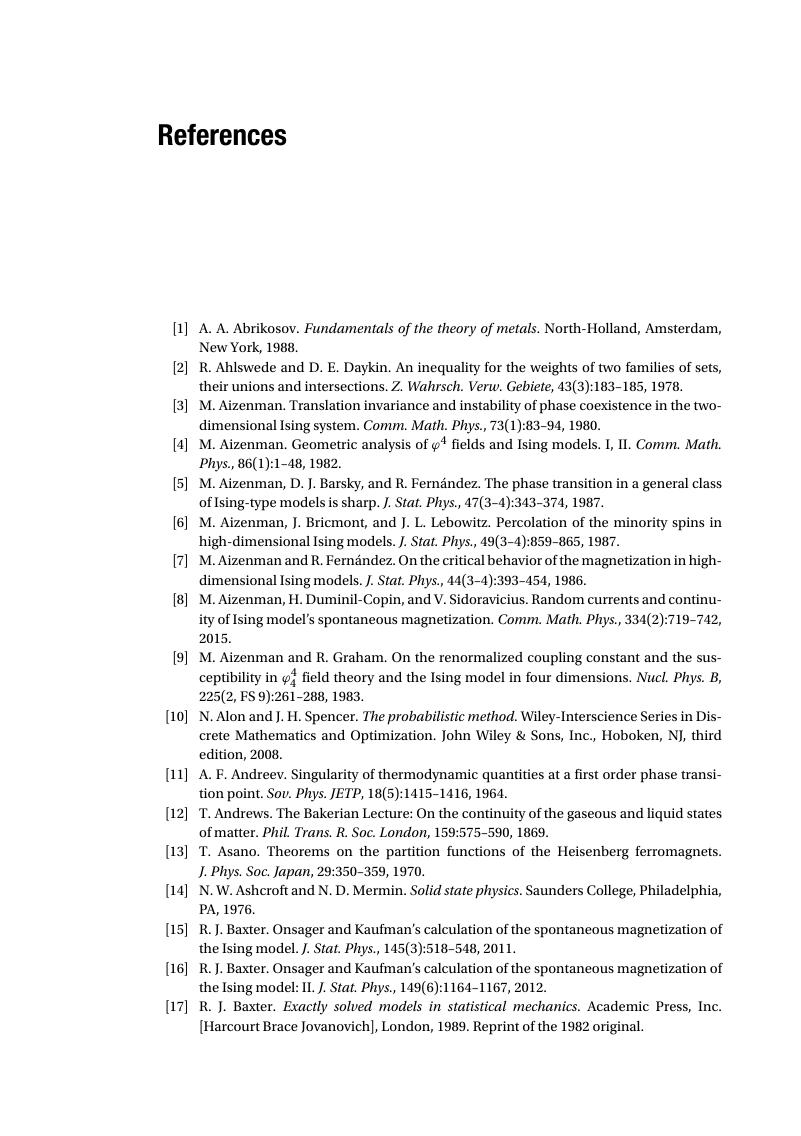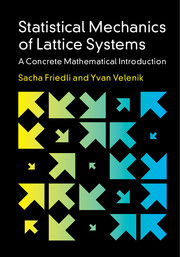Book contents
- Frontmatter
- Dedication
- Contents
- Preface
- Conventions
- 1 Introduction
- 2 The Curie–Weiss Model
- 3 The Ising Model
- 4 Liquid–Vapor Equilibrium
- 5 Cluster Expansion
- 6 Infinite-Volume Gibbs Measures
- 7 Pirogov–Sinai Theory
- 8 The Gaussian Free Field on Zd
- 9 Models with Continuous Symmetry
- 10 Reflection Positivity
- Appendix A Notes
- B Mathematical Appendices
- C Solutions to Exercises
- References
- Index
- References
References
Published online by Cambridge University Press: 17 November 2017
- Frontmatter
- Dedication
- Contents
- Preface
- Conventions
- 1 Introduction
- 2 The Curie–Weiss Model
- 3 The Ising Model
- 4 Liquid–Vapor Equilibrium
- 5 Cluster Expansion
- 6 Infinite-Volume Gibbs Measures
- 7 Pirogov–Sinai Theory
- 8 The Gaussian Free Field on Zd
- 9 Models with Continuous Symmetry
- 10 Reflection Positivity
- Appendix A Notes
- B Mathematical Appendices
- C Solutions to Exercises
- References
- Index
- References
Summary

- Type
- Chapter
- Information
- Statistical Mechanics of Lattice SystemsA Concrete Mathematical Introduction, pp. 596 - 613Publisher: Cambridge University PressPrint publication year: 2017



